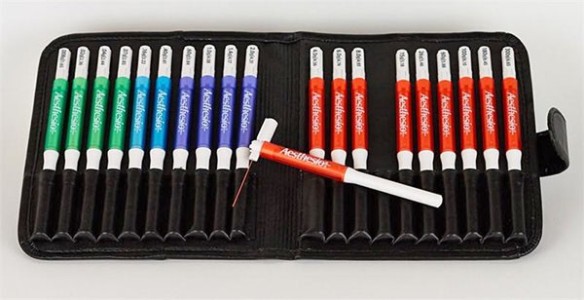Authors
Pham-Dang N, Descheemaeker A, Dallel R, Artola A
Lab
Douleur Trigéminale et Migraine, BP 10448 Neuro-Dol, Faculté de Chirurgie Dentaire, INSERM/UdA U1107, Clermont Université, Université d'Auvergne, 2 rue de Braga, F-63100, Clermont-Ferrand, France.
Journal
Eur J Neurosci.
Abstract
The γ isoform of protein kinase C (PKCγ), which is concentrated in a specific class of interneurons within inner lamina II (IIi ) of the spinal dorsal horn and medullary dorsal horn (MDH), is known to be involved in the development of mechanical allodynia, a widespread and intractable symptom of inflammatory or neuropathic pain. However, although genetic and pharmacological impairment of PKCγ were shown to prevent mechanical allodynia in animal models of pain, after nerve injury or reduced inhibition, the functional consequences of PKCγ activation alone on mechanical sensitivity are still unknown. Using behavioural and anatomical approaches in the rat MDH, we tested whether PKCγ activation in naive animals is sufficient for the establishment of mechanical allodynia. Intracisternal injection of the phorbol ester, 12,13-dibutyrate concomitantly induced static as well as dynamic facial mechanical allodynia. Monitoring neuronal activity within the MDH with phospho-extracellular signal-regulated kinases 1 and 2 immunoreactivity revealed that activation of both lamina I-outer lamina II and IIi -outer lamina III neurons, including lamina IIi PKCγ-expressing interneurons, was associated with the manifestation of mechanical allodynia. Phorbol ester, 12,13-dibutyrate-induced mechanical allodynia and associated neuronal activations were all prevented by inhibiting selectively segmental PKCγ with KIG31-1. Our findings suggest that PKCγ activation, without any other experimental manipulation, is sufficient for the development of static and dynamic mechanical allodynia. Lamina IIi PKCγ interneurons have been shown to be directly activated by low-threshold mechanical inputs carried by myelinated afferents. Thus, the level of PKCγ activation within PKCγ interneurons might gate the transmission of innocuous mechanical inputs to lamina I, nociceptive output neurons, thus turning touch into pain.
BIOSEB Instruments Used
Von Frey Filaments (Bio-VF-M)
Source :

 Douleur - Allodynie/Hyperalgésie Thermique
Douleur - Allodynie/Hyperalgésie Thermique Douleur - Spontanée - Déficit de Posture
Douleur - Spontanée - Déficit de Posture Douleur - Allodynie/Hyperalgésie Mécanique
Douleur - Allodynie/Hyperalgésie Mécanique Apprentissage/Mémoire - Attention - Addiction
Apprentissage/Mémoire - Attention - Addiction Physiologie & Recherche Respiratoire
Physiologie & Recherche Respiratoire




































 Douleur
Douleur Système Nerveux Central (SNC)
Système Nerveux Central (SNC)  Neurodégénérescence
Neurodégénérescence Système sensoriel
Système sensoriel Système moteur
Système moteur Troubles de l'humeur
Troubles de l'humeur Autres pathologies
Autres pathologies Système musculaire
Système musculaire Articulations
Articulations Métabolisme
Métabolisme Thématiques transversales
Thématiques transversales Congrès & Meetings
Congrès & Meetings 